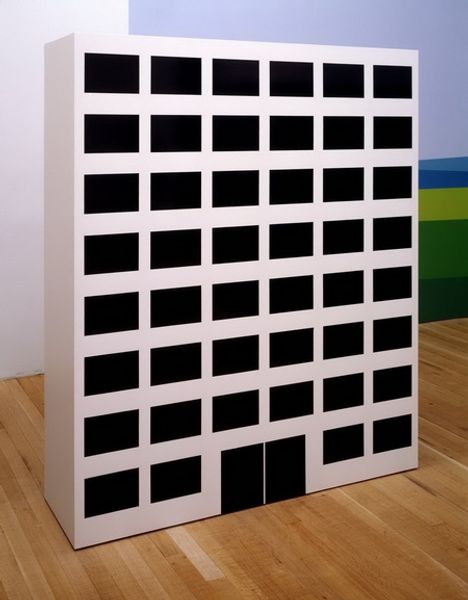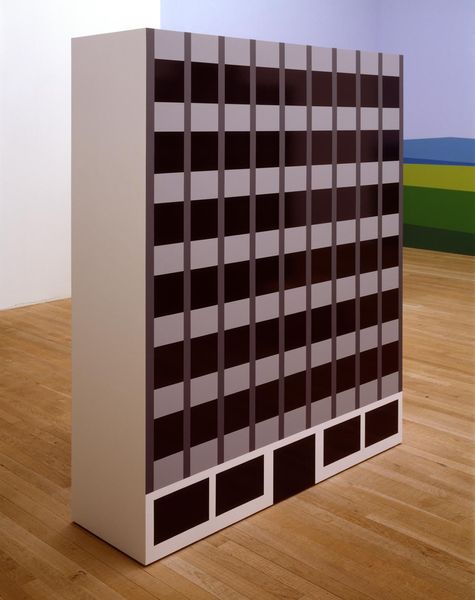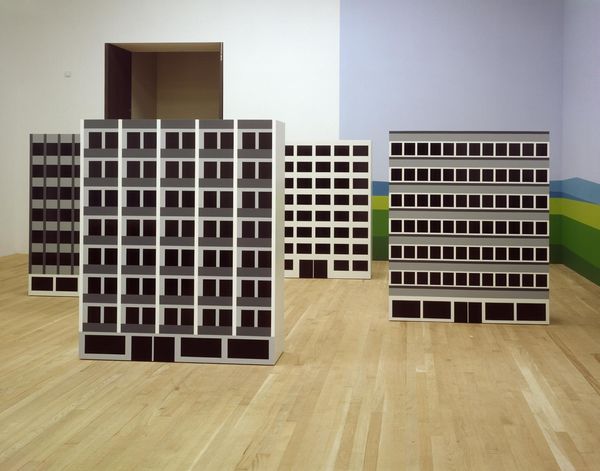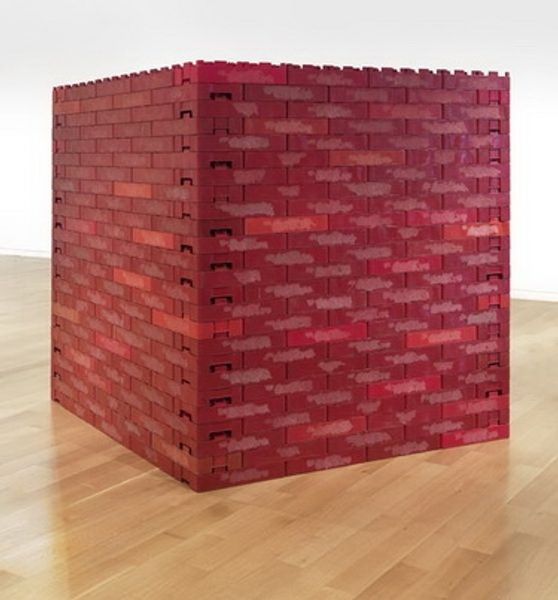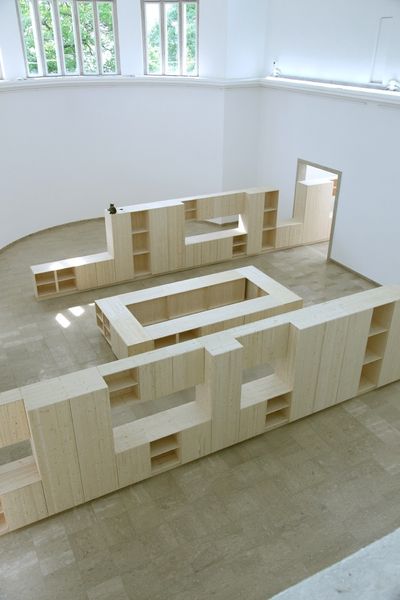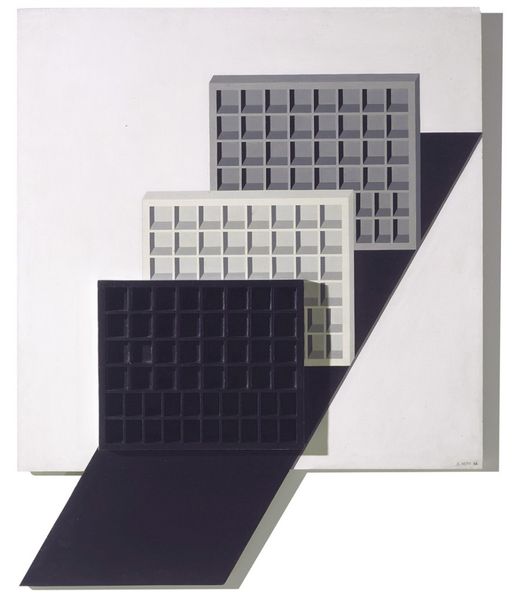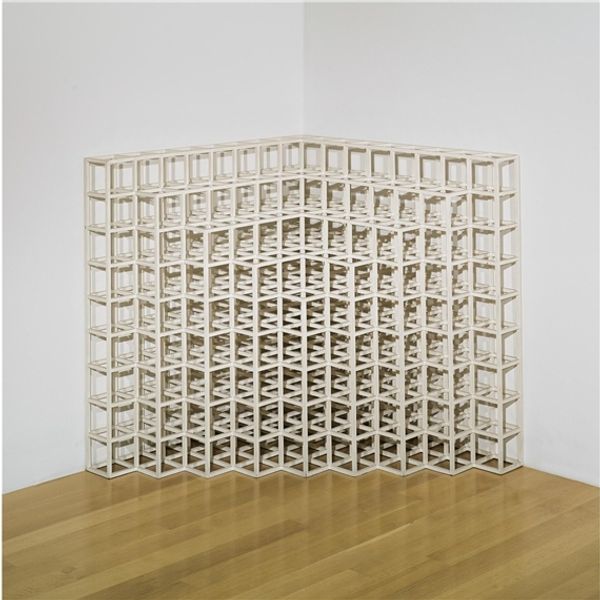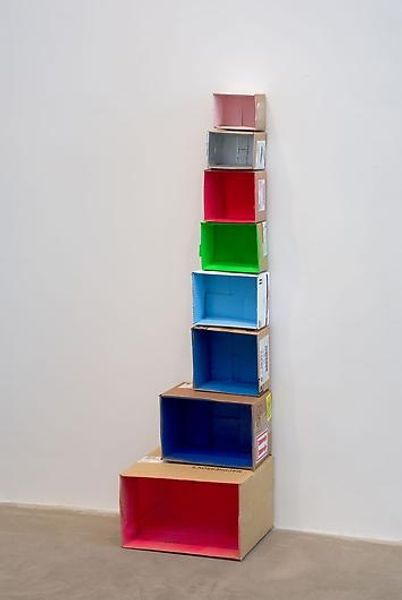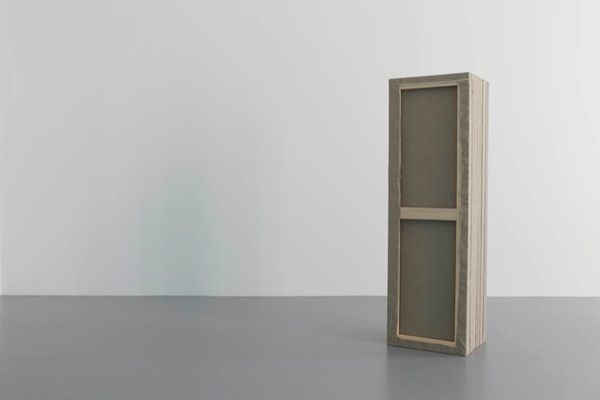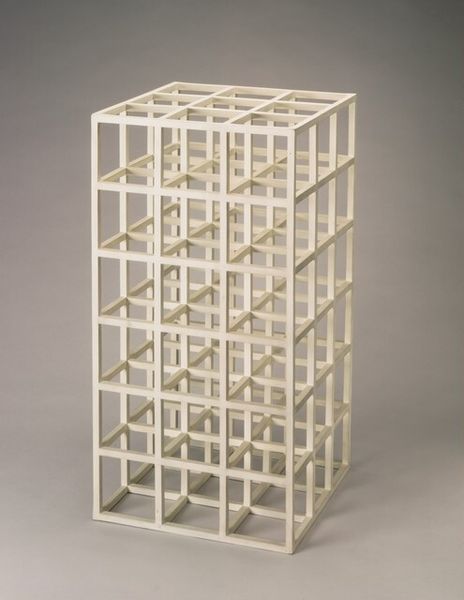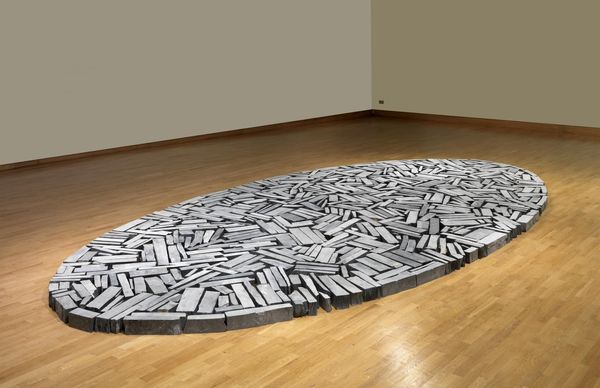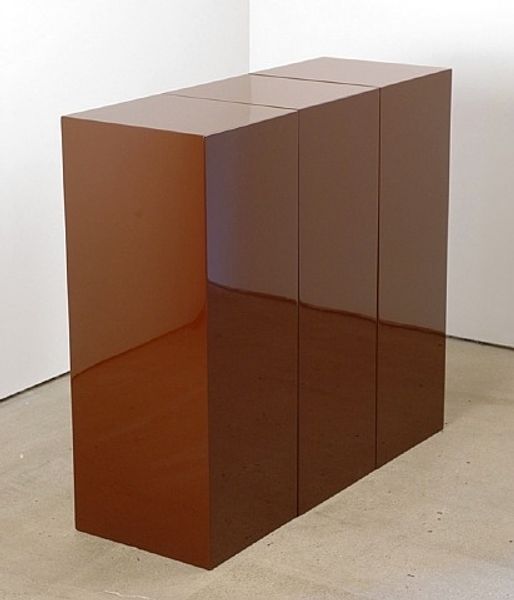
Dimensions: unconfirmed: 1845 x 1535 x 453 mm
Copyright: © Julian Opie | CC-BY-NC-ND 4.0 DEED, Photo: Tate
Curator: Julian Opie's piece, "You see an office building. 4," presents a stark, simplified facade. I'm immediately struck by the unsettling calmness of its repetitive geometry. Editor: The depersonalized facade speaks volumes about late capitalism and the erosion of individuality within corporate structures. The building becomes a symbol of uniformity and alienation. Curator: Absolutely, the building's architecture is reduced to its most basic geometric elements, almost hieroglyphic. The window as empty, dark symbols… Editor: Those darkened windows could also be interpreted as vacant stares, reflecting a collective disconnection within the working populace. Or perhaps the windows are symbols of something lurking. Curator: It’s a powerful critique of urban anonymity and the ways in which architecture can both shape and reflect societal power dynamics. This piece really stays with you. Editor: It does. Opie distills the essence of the modern office building, prompting reflection on the narratives of work, identity, and the built environment.
Comments
tate 8 months ago
⋮
http://www.tate.org.uk/art/artworks/opie-you-see-an-office-building-4-t07210
Join the conversation
Join millions of artists and users on Artera today and experience the ultimate creative platform.
tate 8 months ago
⋮
You see an office building. 4 and its companions, numbers 2 (Tate T07208), 3 (Tate T07209) and 5 (Tate T07211), are four rectangular floor-standing units of the same size. Opie created nine in this series in 1996. They are hollow, rectangular boxes constructed from MDF board, raised slightly off the floor with four narrow feet on the base of each. The boxes were roller-painted with white paint in the manner of a wall. Simplified architectural details in regular geometric patterns of squares, rectangles and stripes were then added in black and two tones of grey using a paint roller and masking tape system. The tops of the units are painted with a thin layer of white. Opie has explained:
